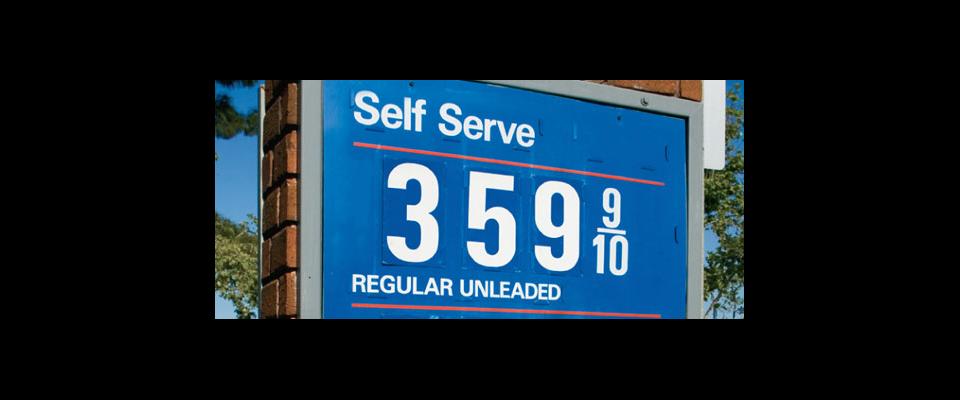If we want our transportation sector to go all-electric (and we do, desperately), we’re going to need a lot more lithium. The element is an ideal metal for EV batteries because it is light, stores large volumes of energy per unit of mass, discharges its power rapidly, and can be recharged quickly. Other battery systems just can’t compete with the popular lithium-ion ones.
But lithium is hard to come by. While it’s not one of the so-called “rare earth elements,” it’s hardly common as dirt and typically present in low concentrations. Today, Australia and Chile produce 77 percent of the world’s lithium—Australia from hard rock mines, and Chile from brines that are pumped from deep aquifers to landscape-scale “pans” where the liquid evaporates into lithium-rich salts. From there, both countries export the ore concentrates and salts to China, where they undergo intensive processing to yield lithium carbonate or lithium hydroxide, the compounds used in EV batteries.
Such constricted supply lines threaten to monkey wrench the EV revolution. What’s needed is a reliable domestic source of lithium, one immune to the vagaries of geopolitics and hiccups on the global market. And as it turns out, one has been found: the Salton Sea in Southern California. Deep beneath the ancient lake bed are geothermically active aquifers brimming with lithium-infused brine.
How much lithium? Late last year, scientists at Berkeley Lab released a detailed report that quantified the resource: around 3.4 million tons of the pure metal, with about 2.6 million tons considered recoverable under current and expected technologies. Given that the world consumption of lithium currently is less than 200,000 tons annually, the Salton Sea reserves could power U.S. EVs—not to mention smartphones, laptops, and tablets—for many years.
On top of that, the process used to extract Salton Sea lithium could be comparatively green.
Hard rock lithium mines have all the downsides of any major mining operations: massive land scarring, toxic tailings, air and water pollution, etc. Evaporative extraction of lithium-infused brines requires many square kilometers of shallow ponds and accompanying infrastructure; the footprint is huge.
But Salton Sea lithium extraction plants will piggy-back on existing geothermal plants, said Patrick Dobson, a scientist at Berkeley Lab’s Earth Sciences Division and the head of the Lab’s Geothermal Systems Program. Already, hot brines from geothermically active strata are pumped from depths as great as 2.5 kilometers. Steam from the brine drives turbines that generate electricity. Afterward, the brine is reinjected into aquifers.
Now, the plan will be to extract the lithium before reinjection, a process that can be repeated over and over, until the brines become too diluted to make recovery economically practical.
“Currently, three companies are operating power plants in the Imperial Valley’s geothermal field, pumping 21.5 thousand metric tons of lithium annually,” said Dobson. “It’s not recovered, because the necessary extraction facilities haven’t been built yet. But a significant portion of the infrastructure necessary to produce large quantities of lithium is already in place.”
That’s not to say the environmental impacts will be nonexistent. Researchers like William Stringfellow, an environmental engineer at Berkeley Lab, are trying to quantify those as well. “One of our objectives focused on looking at the effects of the existing geothermal facilities and extrapolating from that,” he said. “Nobody has actually successfully processed lithium brine in this way yet, so we want to evaluate all the possible impacts—air quality, water usage, and solid waste among them.”
While those impacts are unlikely to prove overwhelming, they will be significant enough to warrant mitigation.
“In terms of solid waste, for example, current Salton Sea geothermal energy plants produce about 84 thousand tons of solid waste annually, and full-scale lithium production would probably double that,” said Stringfellow. “About 75 percent of that will be silica that precipitates out of the brine and is harmless. It can be transported to a standard landfill. But the remainder will be sufficiently hazardous—mainly due to lead and arsenic—to require a special disposal facility.”
Once the impacts are better understood and plans for mitigation finalized, Dobson said, it will be up to the local communities to determine whether the risks are worth the potential benefits.

Certainly, the Salton Sea region is no stranger to environmental problems. Indeed, the Sea itself—California’s largest inland body of water—began as an environmental disaster in 1905, when a major engineering effort to bring Colorado River water to the Imperial Valley went awry. That spring, floods broke through a headgate, sending torrents of water gushing into the ancient salt-encrusted lakebed.
The uncontrolled diversions continued for two years, ultimately forming a vast body of water forty miles long and 13 miles wide. In subsequent years, drain water from irrigated farmlands fed into this inland “sea,” ultimately stabilizing it at a smaller size. The water was stocked with a variety of marine fish species, which thrived at first, and the aquatic habitat became a destination for a vast array of waterfowl, shorebirds, wading birds—and developers. Through the 1960s, the Salton Sea was a popular vacation destination, but its popularity waned as the lake itself shrunk and grew increasingly saline.
Today, the Sea is moribund. The water level continues to recede and the only fish that survive in it are tilapia and pupfish, both of which have high salt and temperature tolerances. Even light winds send up vast clouds of airborne dust contaminated with selenium, fertilizers, and agricultural chemicals, posing profound health hazards to Imperial Valley residents, many of whom are low-income farmworkers.
Lithium extraction could diversify the region’s economy, bringing more jobs and enhanced tax revenues. But skepticism among residents remains high.
Daniela Flores, the executive director of the Imperial Valley Equity and Justice Coalition, said locals have witnessed other supposed regional boons over the decades—agribusiness, geothermal energy, and solar power among them. “The benefits have gone to the farmers or the companies, but there’s been very little trickle down to the communities,” she said. “Take solar energy as an example. The Salton Sea area supports the fourth largest solar complex in the world, but the benefit to residents has been minimal. We don’t want to see that repeated with lithium.”
Flores expressed alarm over the rapid approval of environmental clearances for proposed lithium projects.
“The industry and counties were supposed to host a lot of outreach meetings on the projects, but there haven’t been that many, and there hasn’t been a single one conducted completely in Spanish,” she said. “That’s a real problem because many residents only speak Spanish. Meanwhile, the approvals seem fast-tracked. No one knows what’s going on, and there’s been little effort to correct that.”
Flores cited SB 125, a state bill passed in 2022 establishing a lithium extraction tax that will benefit Imperial and Riverside Counties, as another concern. “We’re supposed to get updates on priorities for SB 125 revenues, but we haven’t seen them,” Flores said. “That money is desperately needed for improved health care, critical infrastructure, and worker protections. But the counties haven’t been transparent about where the money will go.”
Then there’s the Salton Sea itself, which, for all its environmental woes, remains one of the most important avian sanctuaries in California. While the planned lithium projects won’t pump water directly from the Salton Sea, they will have an impact on the area’s water supply, which derives from the Colorado River.
“These projects will use a significant amount of water,” said Berkeley Lab’s Stringfellow. “The precise amount hasn’t been calculated, though we do know it will be a fraction of that used by local agriculture. The Imperial Valley Irrigation District is planning for lithium extraction, and there is also good potential for water recovery during the extraction process. We think it could be close to the amount of water consumed.”
Frank Ruiz, the Salton Sea program director for Audubon California, said an updated regional water “budget” is critical.
“Another industry in this area is definitely going to impact the water budget, and we need to figure out how to accommodate that,” said Ruiz. “Yes, the lithium industry says there will be a closed loop water use system, but there will still be water loss. Estimates are it will take 55,000 to 85,000 gallons of water for every metric ton of lithium. Over the long run, that’s a lot of water. I’m not opposed to lithium extraction, but it must be done in a responsible way.”
Despite reservations, a certain sense of inevitability prevails. It’s a Benthamite calculation: the greatest possible good for the greatest possible number. The decarbonization of the national vehicle fleet may well trump legitimate regional concerns about the impacts. But both researchers and local advocates stress that national priorities shouldn’t run roughshod over the rights and interests of the people who live around the Salton Sea.
“Imperial County has the highest poverty rate and the highest asthma rate of any county in California,” Stringfellow said. “The industry has an obligation to provide sustained benefits. The good thing is that these projects will be brought online gradually—there’s not going to be a sudden shock. Imperial Valley Community College has initiated a program for training technicians and facility operators so local people can qualify for good jobs, and there’s an effort to establish lithium battery manufacturing centers in the valley, which could further expand employment. Hopefully, this time it will be done right.”
























